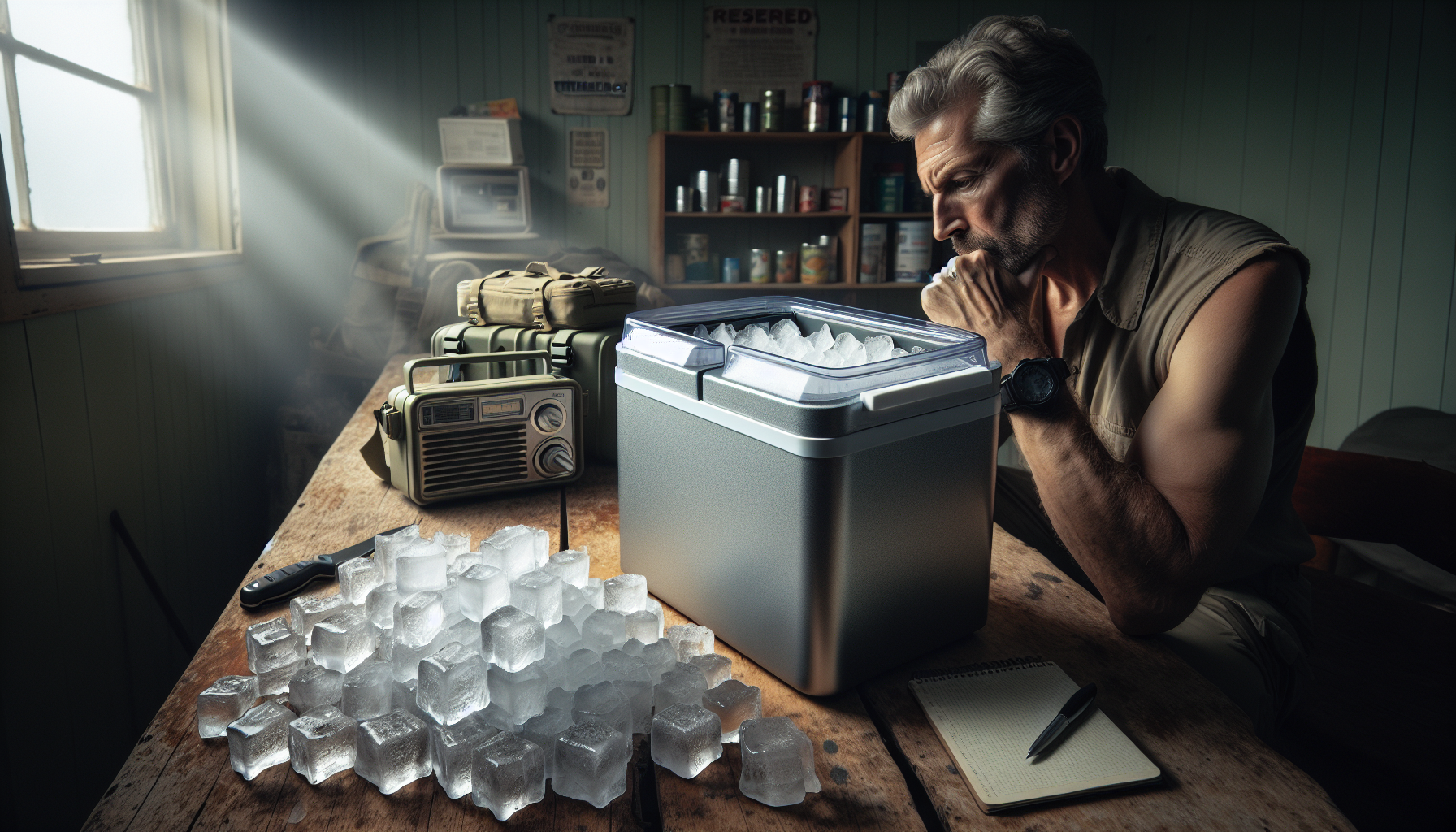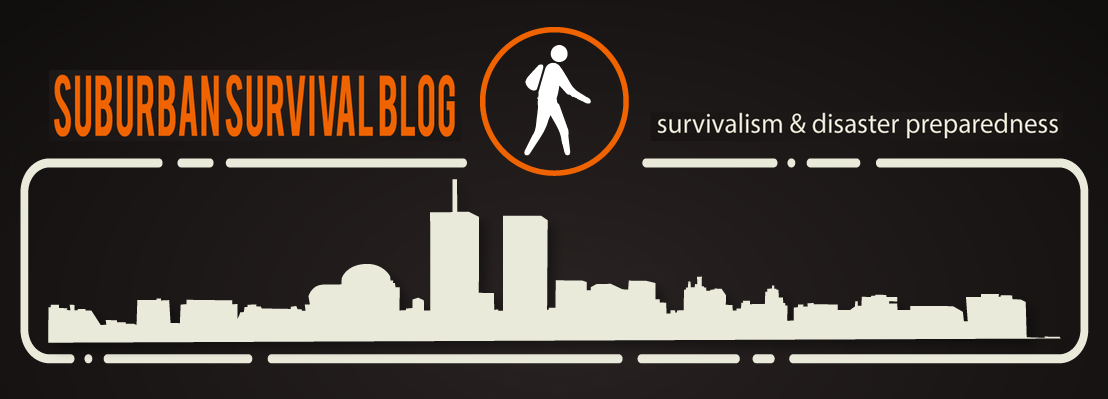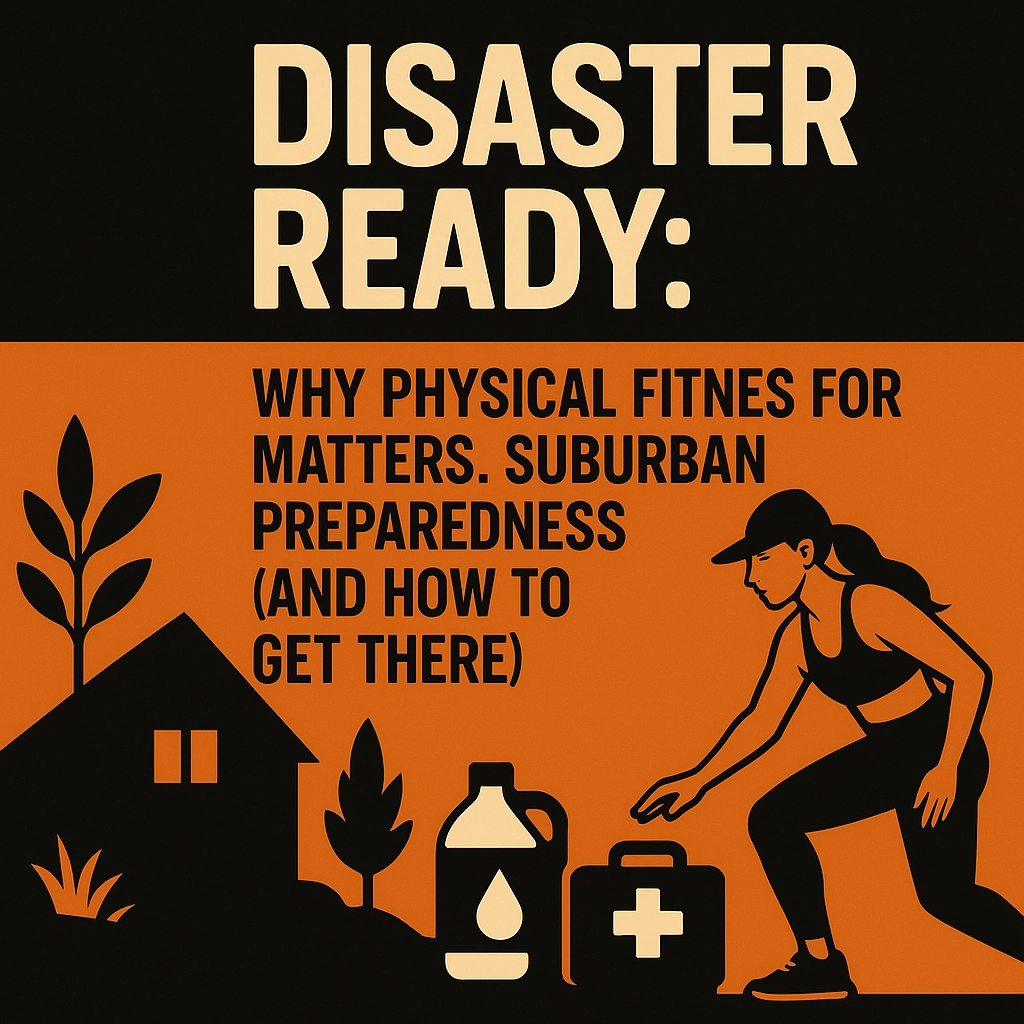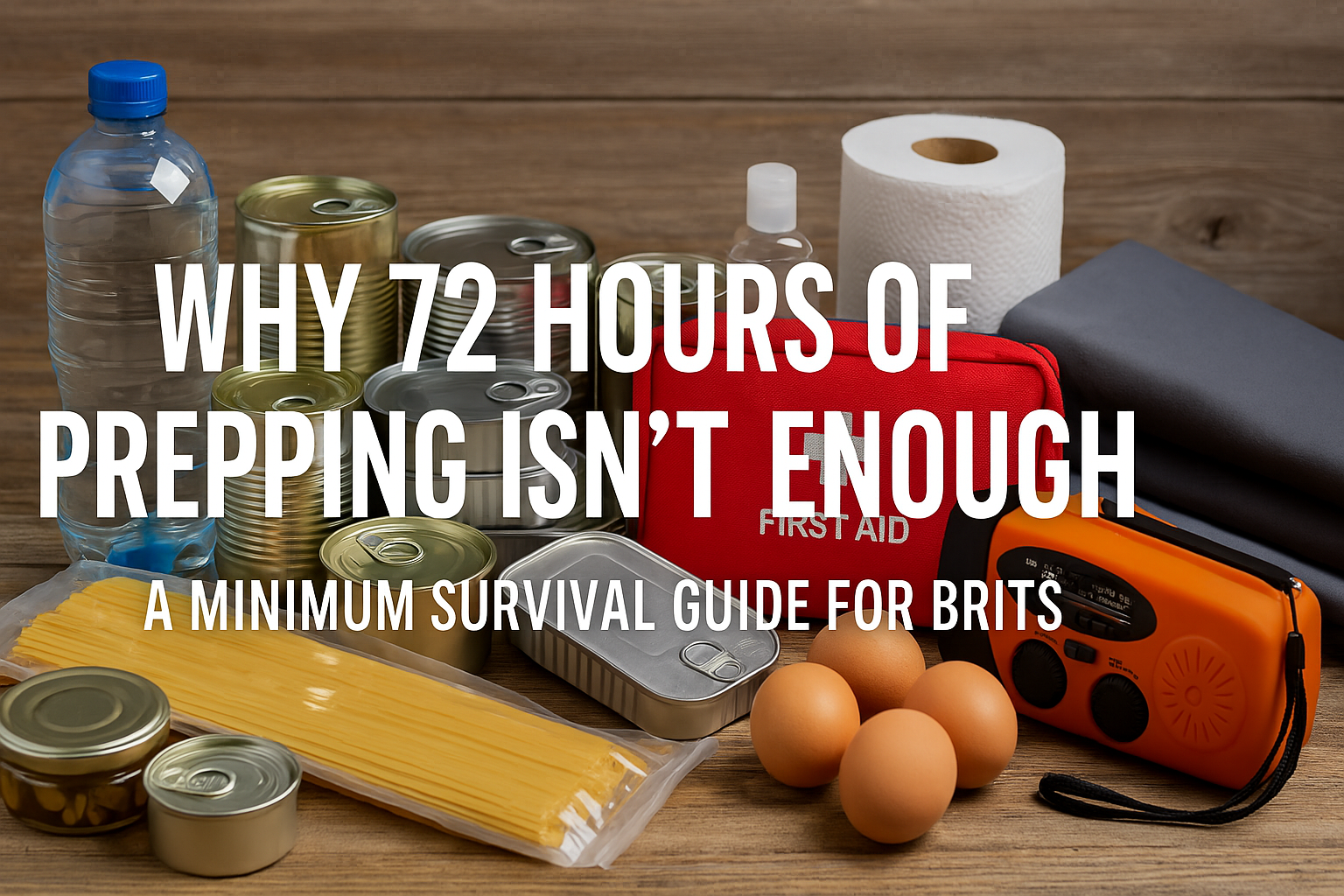
In today’s world, being prepared for emergencies is not just wise; it’s essential. As we navigate the complexities of climate changes and unforeseen power outages, one often overlooked yet critical aspect of preparedness is the ability to maintain access to ice. A mini ice maker, particularly a portable ice maker that can run on a generator or a solar battery bank, is a game-changer in such situations. Not only does it ensure that you can keep food cold and preserved longer, but it also enhances comfort during stressful times. This utility makes the mini ice maker, including countertop and portable models, an indispensable tool for any prepper’s arsenal.
This article explores the undeniable importance of ice in emergency scenarios, highlights the benefits of owning a tabletop ice maker, and offers essential considerations when selecting one that suits your needs. Additionally, we’ll provide guidance on how to maintain your ice maker for optimal performance, ensuring you’re always prepared, no matter what life throws your way. From understanding how a portable ice maker can sustain you in an emergency power outage to ensuring your device can efficiently run on a generator or solar battery bank, we’ll cover all the bases to help you make an informed decision on this critical piece of emergency preparation equipment.
Why Ice Matters in an Emergency
In the wake of a disaster, the role of ice transcends mere convenience, becoming a crucial element of emergency response. Its importance is magnified due to the potential unavailability and contamination of water sources, making packaged ice a vital resource for clean water and sanitation needs.
Medical Uses
The application of ice in medical emergencies is profoundly impactful. For instance, therapeutic hypothermia, a medical treatment lowering the body’s temperature, has been utilized to protect the brain during instances of sudden cardiac arrest or other severe medical conditions. This process involves cooling the body, significantly slowing the metabolic rate, and has been proven to enhance patient recovery outcomes. Hospitals employ various methods such as gel pads or ice packs to maintain the body at therapeutic temperatures, thereby reducing the risk of further injury and improving recovery rates.
Moreover, ice’s capability to manage pain and swelling in acute injuries is well-documented. It is particularly effective in reducing inflammation and slowing nerve conduction velocities, which alleviates pain. This method, known as cryotherapy, is crucial not only for immediate injury management but also as a rehabilitative measure in postoperative care, reducing the need for opioid pain relievers and thereby addressing the broader public health challenge of opioid dependency.
Preserving Perishables
During power outages or in scenarios where conventional refrigeration is not an option, ice becomes an indispensable ally in preserving perishable foods. Emergency ice can significantly extend the safe temperature range of perishables, keeping items like meats, dairy products, and eggs safe from spoilage. The strategic use of block ice, which melts at a slower rate compared to regular ice, provides extended protection, effectively expanding the window in which food can be safely consumed.
The importance of maintaining a supply of emergency ice cannot be overstated, as it serves as a critical stopgap measure ensuring the safety and nutritional availability of food until normalcy is restored. This not only helps in sustaining physical health but also provides psychological comfort during stressful times, knowing that basic needs are met.
In conclusion, ice is a versatile and essential tool in emergency preparedness, serving both medical and food preservation needs effectively. Its role in disaster scenarios underscores the importance of readiness and the need to maintain access to this simple yet life-saving resource.
Benefits of Owning a Tabletop Ice Maker
Tabletop ice makers, particularly those designed for portability and versatility, offer several advantages that make them invaluable in both daily life and emergency situations.
Portability
One of the standout features of tabletop ice makers is their portability. These compact devices can easily be used in various settings, including RVs, campers, boats, and food trucks. Their lightweight and compact design make them ideal for scenarios where traditional ice-making facilities might be unavailable. For instance, the Igloo IGLICEBSC26 stands out for its ease of transportability, being lighter and more compact than many of its competitors, which facilitates quick and easy relocation to different sites for draining and cleaning. I personally have one like this, but have been thinking about upgrading to one that can product up to 45lbs of ice per day, now that I have a growing family. For instance while Igloo has one that can produce about 24bs of ice per day, this off brand name can produce up to 45lbs. per day of Ice, about 45% more: EUHOMY Ice Cube Maker Machine.
Transparently, I use mine in the summer in the back yard, and sits in the shed all winter, and is a welcome addition to cool down a drink in the summer heat without having to go inside. However, at 24lbs of ice per day you can recycle your water from the cooler by attaching a hose to the drain plug, and pouring it back into the ice maker to keep making ice to keep your food cool in your cooler, should your refrigerator not be functioning, especially if you have it hooked up to a solar battery bank or using a generator to create additional cooling for items you require.
Versatile Power Options
In emergencies, such as power outages lasting weeks or months, the ability to produce ice can be crucial. Tabletop ice makers that can operate on versatile power sources become particularly valuable. By integrating a small 12-volt DC to 120-volt AC inverter connected to a battery bank or solar battery bank you may have built, these ice makers can continuously operate all day from a the stored energy of your batteries, which in turn can be recharged daily using a solar panel. This setup not only ensures a consistent supply of ice but also supports other essential devices. For example, a typical setup might include a 150-watt solar module to offset the ice maker’s power consumption, effectively balancing the energy needs without overloading the system.
Moreover, during extended grid-down scenarios, it could be practical to use a vehicle’s battery coupled with an 800-watt inverter to power the ice maker. This arrangement can also support additional appliances like LED light fixtures, a flat-screen television, and charging ports for multiple devices, provided the vehicle is strategically parked near the home and connected with a suitable extension cable.
Owning a tabletop ice maker not only provides the convenience of quick ice production during social gatherings and hot summer days but also ensures readiness in times of emergency, making it a smart addition to any preparedness plan.
Considerations When Selecting a Tabletop Ice Maker
Size and Portability
When selecting a tabletop ice maker, size and portability are crucial factors to consider. Models like the Igloo IGLICEBSC26, for instance, since these types are the most popular model type out there, brand and off brand, are noted for their compact dimensions, standing less than a foot tall and only 8.5 inches deep. This makes them ideal for small spaces and easy storage, perfect for seasonal use or for those with limited kitchen space. Their lightweight design enhances portability, allowing them to be conveniently moved between locations such as RVs, campers, and boats. This flexibility is particularly valuable in emergency preparedness, where the ability to quickly and easily transport essential tools can be critical.
Production Rate
Understanding the ice production rate of a tabletop ice maker is essential. This rate indicates how much ice the machine can produce over a 24-hour period under ideal conditions, typically around 70°F for ambient temperature and 50°F for water temperature. It’s important to note that if these temperatures increase, the production rate may decrease. For instance, portable ice makers, like the widely available Magic Chef MCIM22 (this one looks and operates exactly like mine), often have an average production rate of just under 30 lbs per day, with a capacity to hold about 2 lbs. On the other hand, undercounter ice machines can produce significantly more, ranging from 12 lbs to 65 lbs a day, making them suitable for larger households or social gatherings. These may be a bit more cumbersome to utilize in an emergency situation…
When choosing an ice maker, consider both the production rate and the ice capacity. These two metrics can vary greatly, with the production rate usually being much higher than the capacity, meaning the machine can produce more ice in a day than it can store at any one time. This discrepancy is particularly important in emergency scenarios where a consistent supply of ice is needed to preserve perishables or for medical purposes. By selecting a model that aligns with your daily ice usage and environmental conditions, you ensure that your needs are met efficiently, whether for daily use or during unexpected power outages.
How to Maintain Your Ice Maker for Optimal Performance
Maintaining your mini ice maker not only ensures it runs efficiently but also extends its lifespan, crucial during emergencies when reliable equipment is a must. Here are key guidelines broken down into routine cleaning and proper usage tips.
Routine Cleaning
Regular cleaning is essential to prevent mineral build-up and maintain the quality of ice produced. Begin by unplugging the unit and removing all ice and water. Use a soft cloth and a mild detergent mixed with warm water to clean the interior surfaces gently. For areas with hard water, descaling every three months is crucial. This involves running a cycle with a solution made from water and white vinegar, followed by several cycles of plain water to rinse any residual vinegar. Always dry the interior thoroughly with a clean cloth before restarting the ice maker. I clean mine a few times a summer to ensure there is no mold or any other build-up that could shorten it’s lifecycle
Proper Usage Tips
To optimize performance, always ensure your ice maker is positioned in a cool, shaded area, away from direct sunlight. Heat sources can affect the efficiency of ice production. It’s also important to refill the water reservoir with fresh, clean water and to empty the ice basket regularly. This practice prevents ice clumps and maintains a steady production rate. Additionally, avoid overloading the ice maker. Operating it within its recommended capacity ensures it runs smoothly without undue stress on the system.
By following these straightforward maintenance steps, your ice maker will be ready to perform when you most need it, keeping your perishables fresh and providing essential cooling for medical supplies during any crisis.
Conclusion
We’ve underscored the indisputable value of a mini ice maker for Preppers here, particularly a portable one, in emergency preparedness. From maintaining food safety by extending the shelf life of perishables to providing critical cooling for medical emergencies, the utility of an ice maker in crises is comprehensive. We’ve explored the various facets of why ice is pivotal in emergencies, highlighted the advantages of owning a tabletop ice maker, and detailed the essential considerations for selecting and maintaining one. These discussions illuminate the role of a mini ice maker not just as a convenience device but as a vital component of any emergency preparedness plan.
The significance of being prepared cannot be overstated, especially in a world where uncertainties abound. A portable ice maker, adaptable to different power sources and capable of functioning in varied environments, emerges as a critical tool for resilience. By ensuring access to ice, we not only safeguard our food and medical supplies but also enhance our comfort and safety during challenging times. As we conclude, let this discussion serve as a reminder of the importance of readiness and the practical steps we can take to protect ourselves and our lovedhas in any unforeseen emergency.








